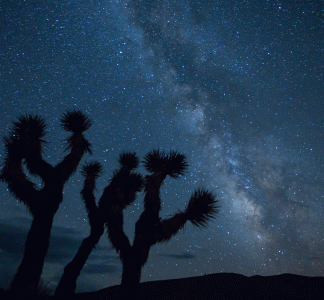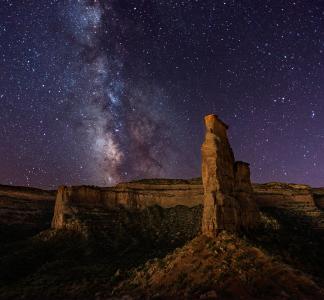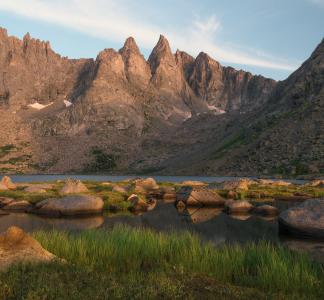11 tips for photographing night skies
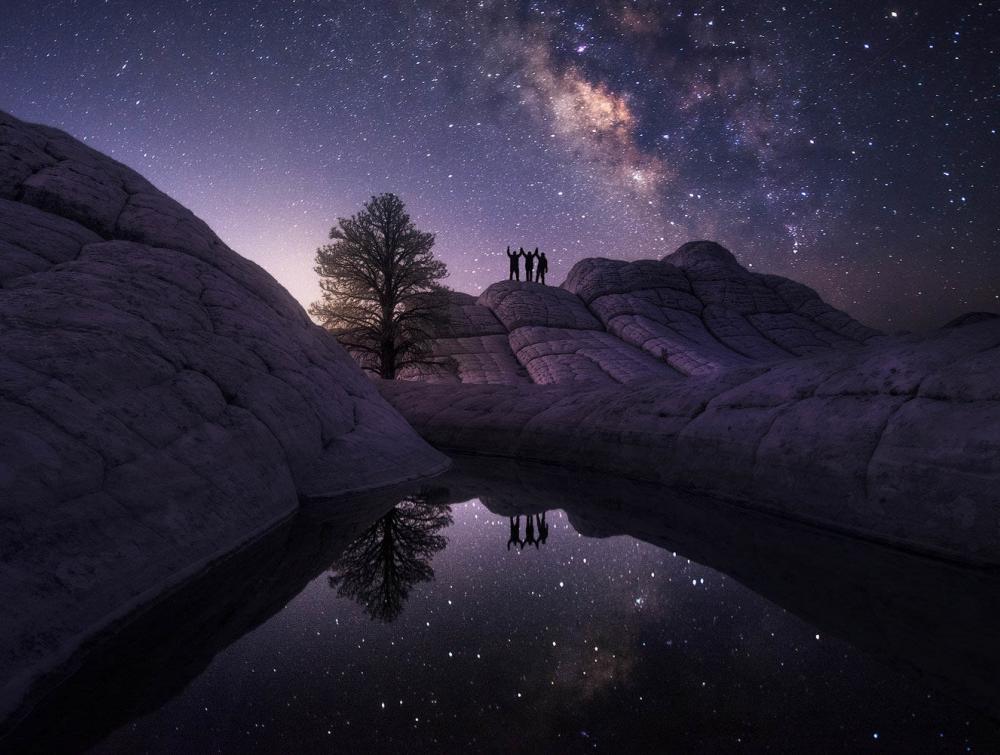
Zach Bright
Astrophotography is for the true adventure seeker.
As rampant light pollution becomes more commonplace, many seek the beauty and joys of dark skies. Protected wild lands are the perfect places to revel in the timeless pleasure of starry skies.
Some attempt to capture that exquisite experience of awe when you realize you are staring into the vastness of both space and time.
Here are some tips for those curious about photographing the glamorous heavens.
1. Locate dark skies. This is the single most important element to astrophotography, but it can also be the most inconvenient given the spread of light pollution (this dark sky finder can help). Luckily, your camera doesn’t need to be ready until at least 90 minutes after sunset (or before sunrise).
2. Prepare for planetary views. Use apps like Photographer’s Ephemeris, SkyGazer 4.5, Stellarium or PhotoPills to find out when celestial bodies will be visible and where you need to be to see them. If you want to capture the milky way, it is most visible from June to September in the northern hemisphere (it’s vertical until about August).
3. Shoot for the moon. Always be aware of the moon phase and from what direction it rises. Four days before or after a new moon, when the moon isn’t visible, is the best time to capture the stars as the moon can flood your pictures with too much light. If you want to shoot a photo with a full moon, dusk is the ideal time to capture its glow.
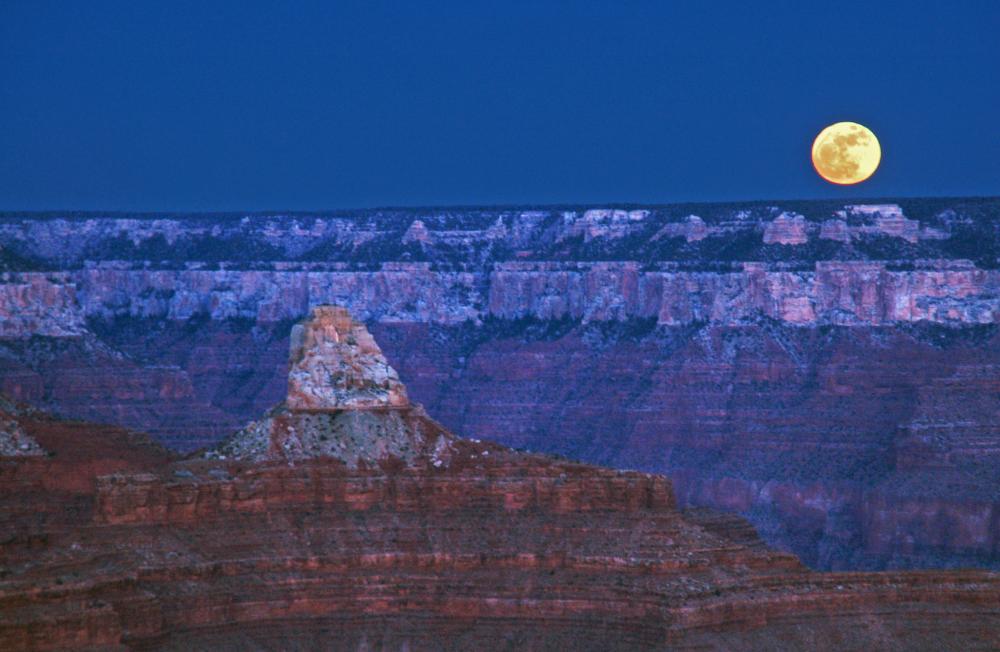
Super Moon Rising over Grand Canyon National Park
M. Quinn, NPS
4. Gear up. Your camera will need high ISO capabilities and a fast wide angle lens (anything with an aperture of 2.8 or wider is best). Other essentials include a very sturdy tripod, cable release (with built-in timer if possible), flashlight and headlamp. Make sure your batteries are fully charged and turn off any accessories that drain power.
5. Be aware of your own light. Your camera’s overly bright LCD screen can trick you into taking pictures that are too dark, so it is crucial that you learn how to use the histogram on your camera. Also it takes at least 15 minutes for our eyes to adapt to the dark, so consider turning off all your personal lights - including those on your camera. You may wish to use a flashlight or headlamp, however, to create light in the foreground of your picture, for example.
6. Keep it manual. Use Manual or Bulb shooting mode, which means the shutter will remain open for as long as the shutter button is pressed. Turn off autofocus and focus the lens to infinity if possible. If your camera has live view, zoom in on a bright star at the highest possible ISO and focus manually (make sure to turn it off and revert to your original ISO afterwards).
7. Maximize exposure. Use the widest aperture, or lowest f-stop. Longer shutter speeds mean brighter shots, so start with at least 10 seconds. If you leave it open for 10 minutes (or up to several hours), you may capture star trails which show the rotation of the Earth. You can use the “500 rule” to avoid that by dividing 500 by the focal length of your lens (for example, if using a 20 mm lens you could use 25 seconds of exposure time before streaking becomes noticeable).
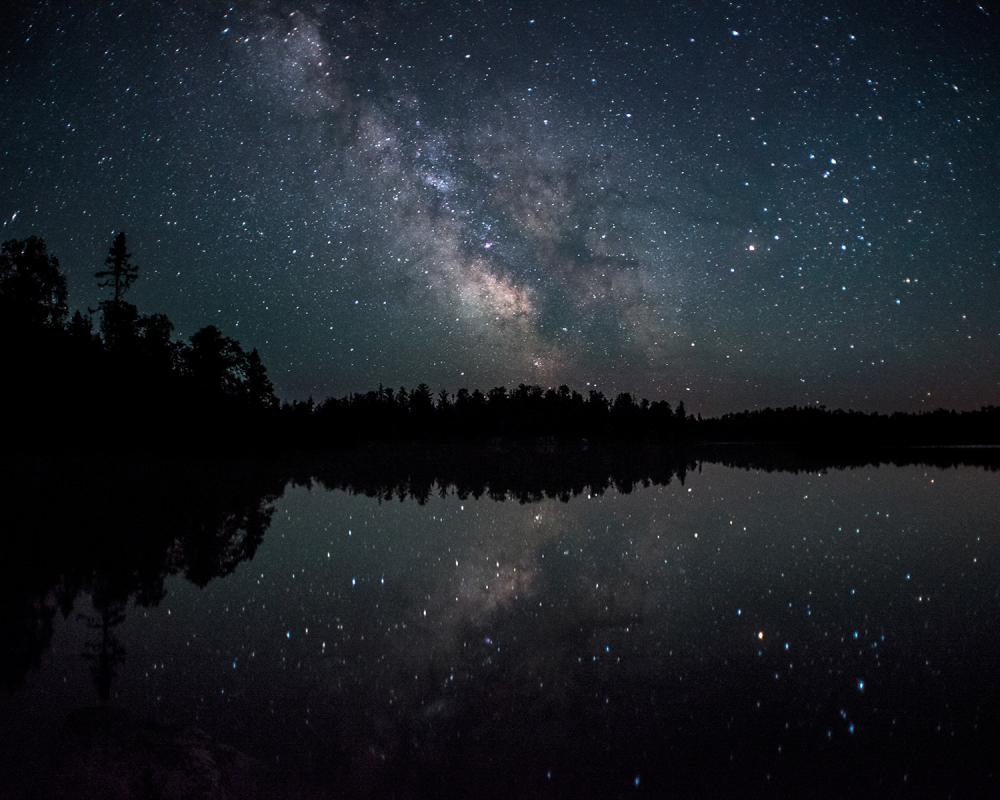
Starry sky over Boundary Waters Canoe Area Wilderness
Greg Owens
8. The more sensitive, the better. Higher ISOs are critical for capturing enough light. They can introduce a lot of noise, so be ready to use a digital editing software to clean up your images. Start at at least 800, but you may need to go as high as 5000.
9. Don’t forget composition. Wild landscapes come in handy here. If you want to include a foreground in your image, take one shot with the stars in focus and one with the foreground in focus. You can stack these using editing software later (you can start with a free software called Deep Sky Stacker).
10. Trust that true colors will be revealed later. Our eyes can’t see color in the night sky, but don’t worry, your camera will. Try using tungsten or Kelvin white balance instead of daylight and shoot in RAW mode (instead of JPG) so you can maximize adjustments later. To make the colors pop out later, you will need to use an image editing software (like Photoshop).
11. Patience and persistence are key! Skies can be the most challenging, unpredictable subjects, so be ready to experiment. Some pros provide “fail safe” places to start, like f/2.8 for 20 seconds at ISO 3200, but every situation will require some trial and error. Bring warm clothes and beverages, and get cozy as you bask at starry dark skies.
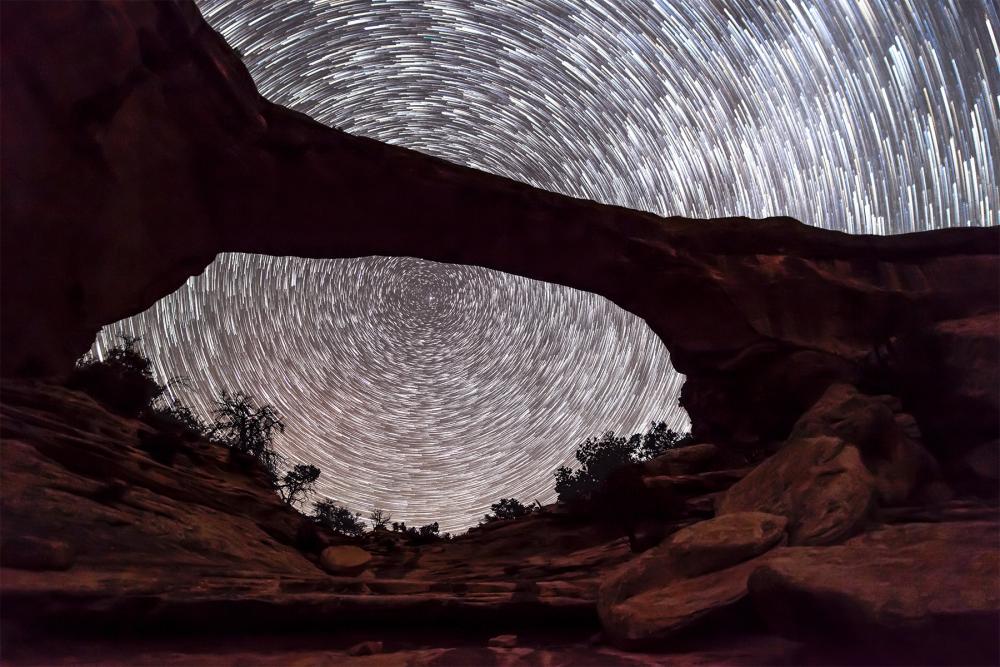
Night sky at Owachomo Bridge
Jacob W. Frank, NPS
